Research on the micro scale in Great Bay and beyond
We spend a lot of time with water here at N.H. Sea Grant — whether it’s time spent directly on the water, teaching people about water and sustainable fisheries or working with communities to help deal with flooding, it’s safe to say that we’re thoroughly pre-occupied with all things aquatic.
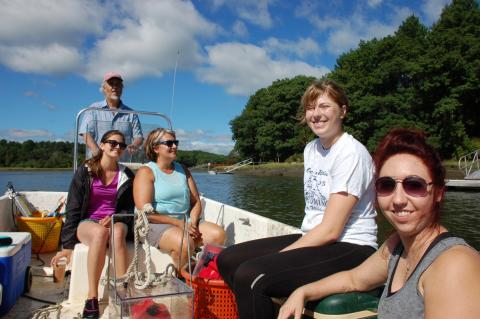
Steve Jones drives the research boat in Great Bay while his microbiology research team enjoys some downtime before the next round of samples.
Some of our work involves the microscopic end of the watery spectrum. Steve Jones, associate director for N.H. Sea Grant, runs a microbiology lab on UNH’s Durham campus in Rudman Hall and out at the Jackson Estuarine Laboratory on Adams Point in Great Bay. Undergrads, grad students and technicians in his lab float between boats, beaches and lab benches to study what’s going on with our water.
Derek Rothenheber, a master’s candidate working in Jones’ lab, is tracking down the microbial source of fecal contamination in southern Maine beaches. Rothenheber is using a new DNA-based approach to determine if the water from storm drains and on the beaches is contaminated with bacteria coming from humans, dogs, birds, ruminant animals or other sources. This is a big step above previous tests that simply determine the presence or absence of enterococci — bacteria that only indicate the presence of fecal matter.
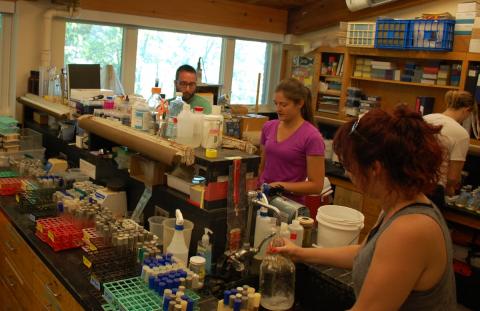
Derek Rothenheber, Lexi Bunda, Jackie Lemaire and Audrey Berenson work at the UNH Jackson Estuarine Lab to prepare various water and oyster samples for further analyses.
Christine Bunyon (UNH ’18) is conducting research on N.H.’s Oyster and Bellamy rivers to determine the sources of bacteria like enterococci and E. coli. By partnering with volunteers to collect water samples during storm events, Bunyon is examining whether or not enterococci and E. coli are accumulating in oysters and transported by sediments in the tidal and freshwater segments of these rivers.
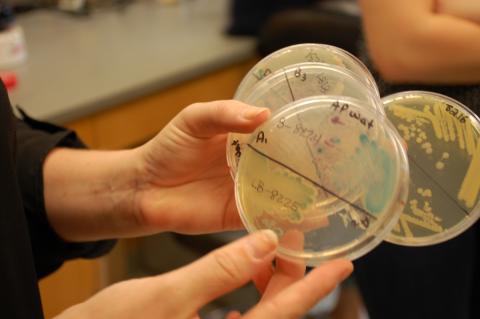
Petri dishes display a variety of bacteria from the microbiology lab's research efforts.
Oysters are a common theme in Jones’ lab — he works closely with researchers at UNH and elsewhere to study Vibrio bacteria in oysters in Great Bay and other locations. Certain pathogenic strains of Vibrio can cause gastrointestinal illness in humans who eat raw or undercooked shellfish, and Jones is devoting a good portion of his research efforts to examining the presence and spread of these strains.
“We’re trying to tease apart where and when the Vibrios are being enriched in the environment,” Jones said. “Does temperature play a role? Are certain species of plankton filtered by the oysters more likely to be associated with Vibrios? That’s the sort of thing we’re looking at here,” he explained.
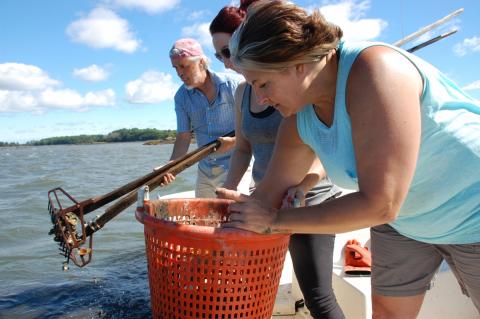
Steve Jones grabs oysters from the Great Bay sediments using a rake while Jackie Lemaire and Kari Hartman help out.
UNH undergrad Audrey Berenson (’19) is helping with oyster sampling biweekly in Great Bay. Lexi Bunda, a Ph.D. candidate for neurobiology at UNH, is training Berenson in Vibrio surveillance to determine why Vibrio concentrations vary throughout the year. Berenson and Bunda collect water samples, plankton and oysters from the bay, then return to the lab to filter water samples that are analyzed for the presence of pathogenic Vibrio species and their virulent strains.
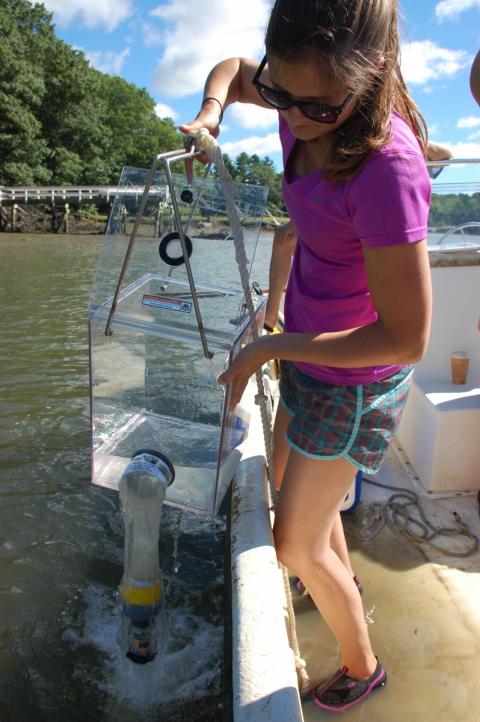
Lexi Bunda collects plankton samples on Great Bay.
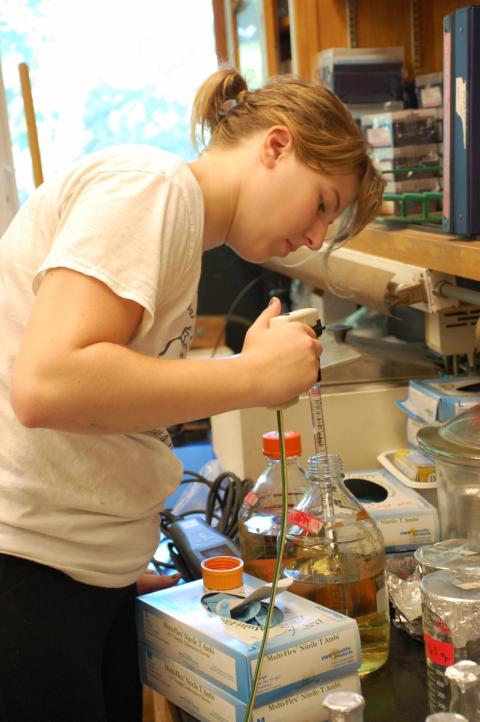
Audrey Berenson measures part of her water sample for further analysis at UNH's Jackson Estuarine Laboratory.
Jackie Lemaire (UNH ’16) helps out with all the lab projects, and Ph.D. candidate Meg Hartwick is examining Vibrio genomic data, plankton and environmental data to determine why Vibrios proliferate and become pathogenic. Kari Hartman is the lab manager for the UNH Northeast Center on Vibrio Disease and Ecology, and she keeps all the analyses and student training running smoothly.
Funding for the research that takes place in Jones’ lab is provided by NOAA, NSF/EPSCoR, the N.H. Agricultural Experiment Station, N.H. DES, Mass. DMF and several municipalities in Maine and N.H.